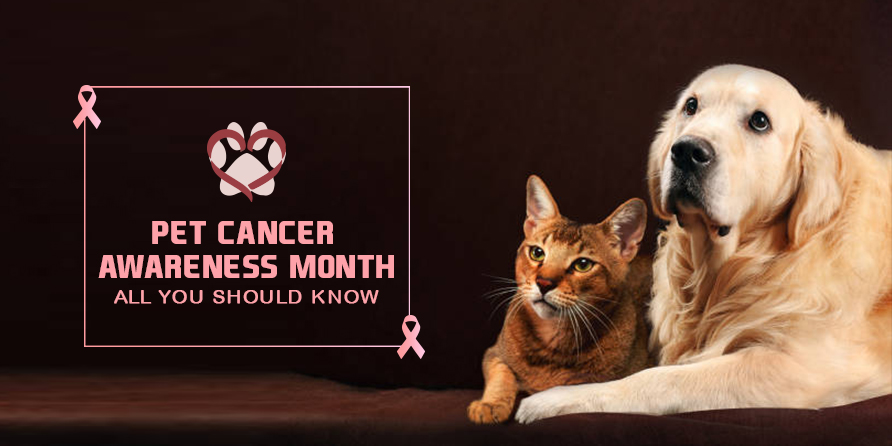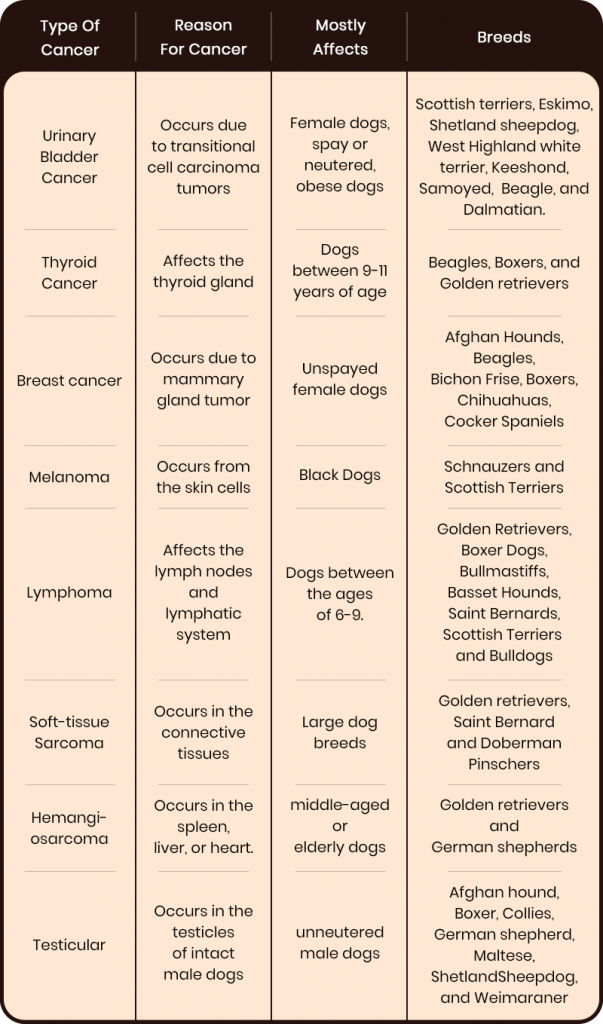
Cancer in pets is not as uncommon as you might think. Did you know that in America one in four dogs and one in five cats suffer from cancer? The thought of our most loved family member suffering from cancer is beyond upsetting. But, to prevent/treat cancer in your pets, it is important that you have relevant information.
Since May is considered Pet Cancer Awareness month, we share with you a list of some commonly occurring cancer in dogs and cats. And also the symptoms that will help you detect cancer in your pet at an early stage.
Cancer and Pets
Like humans, cancer tumors can develop in any part of your pet’s body and make them suffer severely. Symptoms of cancer vary according to the disease type, yet there are certain conditions that when spotted mean your pet requires a diagnosis followed by a relevant treatment.
Cancer in Dogs
Cancer is one of the prominent reasons for death in canines above 10 years of age. But the silver lining is that half of the dog cancer can be cured when detected at early stages.
Cancer symptoms in dogs
When suffering from cancer, dogs show certain symptoms. Here are some common signs of cancer in dogs:
- Strong odor from mouth, ears, and other parts of the body
- Visible lumps and bumps underneath the skin
- Wounds not healing
- Bleeding for no reason
- Change in appetite
- Lethargy
- Difficulty in breathing
- Chronic coughing
- Unreasonable and irreversible weight loss
- Abrupt swelling
- Frequent vomiting and diarrhea
- Straining to urinate
- Difficulty in swallowing
Common types of dog cancer
Cancer in Cats
Although cancer is less common in cats compared to dogs, their number is still significant. Moreover, it is harder to detect illness in cats as they are good at hiding illness. Hence, it’s important to be aware of the common symptoms and most occurring cancer types, so you can treat your feline at the right time.
Cancer symptoms in cats
- Sudden weight loss
- Bleeding without any subsequent reason
- Swelling in lymph nodes
- Abrupt change in behavior
- Excessive vomiting and diarrhea
- Foul odor
- Skin lumps or bumps
Common types of feline cancer
- Mast Cell tumors: Mast cells are also called allergy cells. They play a key role in allergic responses. This cancer majorly impacts middle-aged felines.
- Mammary Tumors (Breast cancer): Affects breast tissues. It is the third most common type of feline cancer. Older feline cats are the most affected by mammary tumors. However, spaying can significantly reduce the risk of this type of cancer.
- Lymphoma: It is a type of blood cancer that occurs in the lymph nodes and causes swelling in the lymph. It can be detected in any part of cats’ bodies but commonly affects the kidneys, spleen, gastrointestinal tract, and chest. It mostly affects cats within two-six years of age.
- Adenocarcinoma: This tumor appears in glandular tissue consisting stomach, small intestine, large intestine, and the rectum. Older male cats are more likely to get affected.
- Squamous cell carcinoma: Squamous cell carcinoma (SCC) is a type of cancer that affects different parts of the cat’s body, including the eyelids, ears, nasal planum, tonsils, esophagus, and more.
You May Also Like: Dispelling the Myths about Cancer Treatment in Dogs
Ways to Prevent Cancer in Pet
Below are some essential measures that every pet owner can incorporate to prevent cancer in their pets.
- Well-balanced diet: Your pet’s daily food items should consist of a blend of the right vitamins and minerals. When purchasing food packages for your pet, make sure it contains vital nutrients like Vitamin C, minerals (magnesium. calcium, and phosphorous), omega 3 fatty acids, carbohydrates, protein, and more.
- Avoid exposure to toxic substances: Carcinogens in cigarettes can deposit on the fur of your pet with passive smoking, which is one of the possible reasons for cancer in pets. Avoid smoking near your furry buddies and also avoid taking them to smoking zones.
- Routine vet check-up: Your pet is never going to share their illness with you. To detect any disease or symptom related to cancer, it’s best to take your pet to the vet once a year or every six months. Please note, that aging dogs and cats are at higher risk of developing cancer.
- Spay or neuter at an appropriate age: Getting your pet neutered and spayed can significantly reduce the risk of your pet suffering from mammary tumors, and testicular tumors that often result in breast and testicular cancer, respectively.
CONCLUSION
Now that you have acquired information on pet cancer, we encourage you to spread awareness on one of the most not-so-conversed topics, i.e., pet cancer, to all the pet parents you know. Help someone detect cancer in the pet at the right time. Cancer can be treated more effectively if detected at an early stage, so it is important to recognize the value of regular vet visits, thorough examinations, and early diagnosis.









